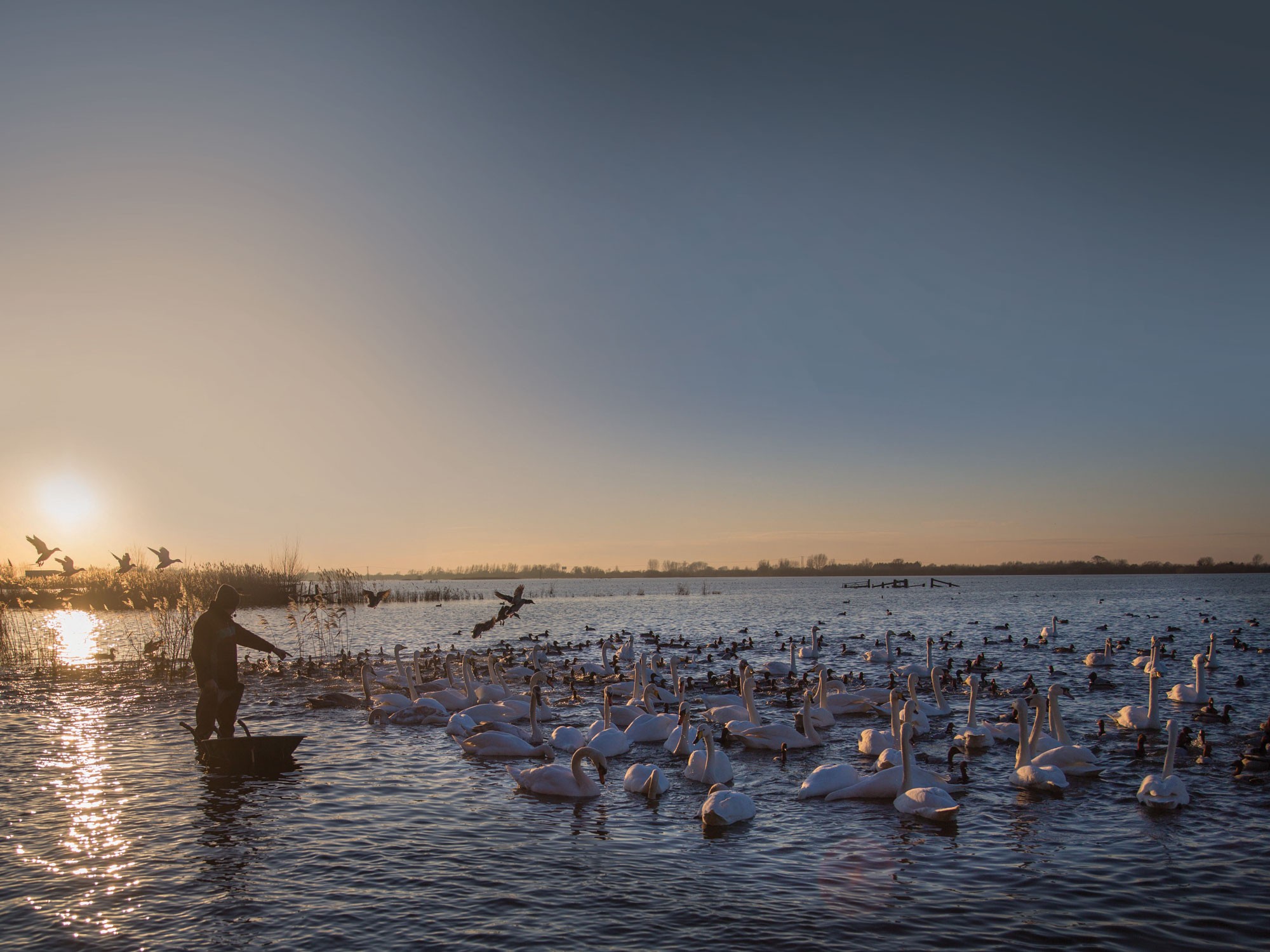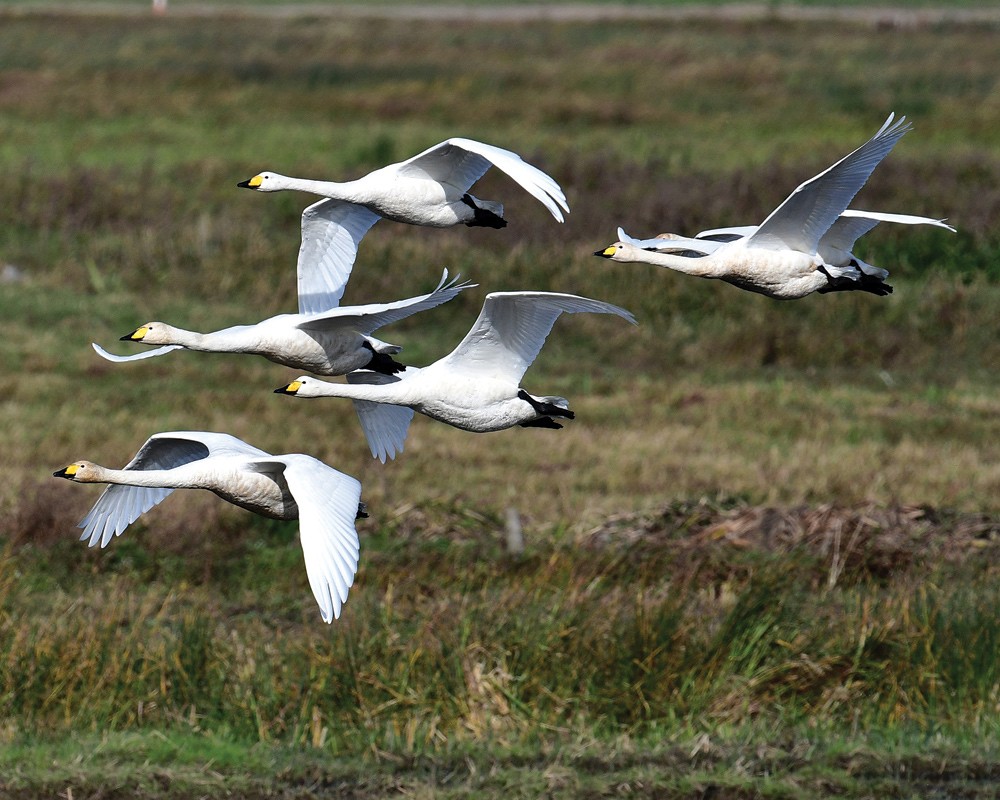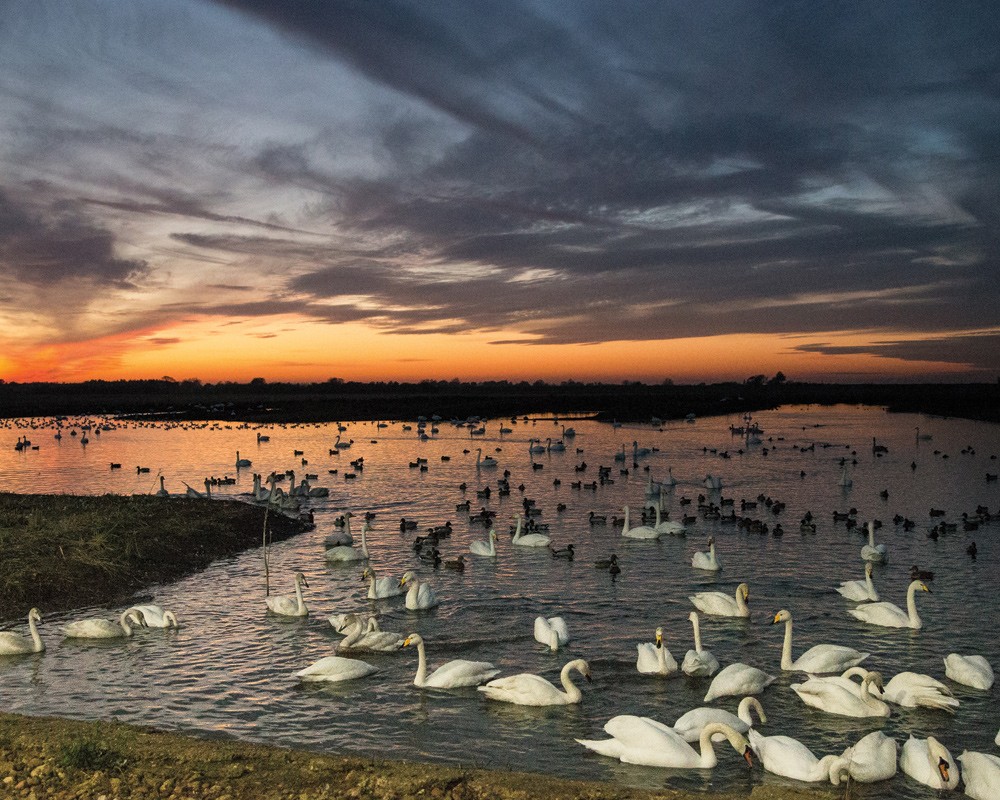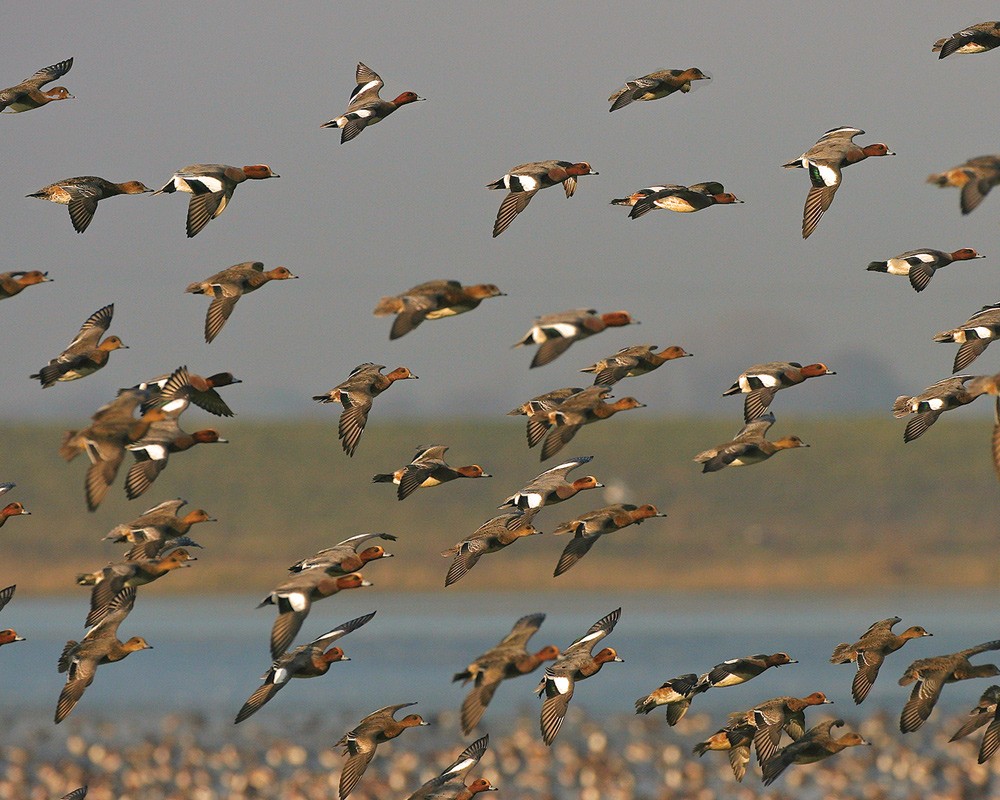
Welney’s unmissable spectacle of swans
Every year, over 10,000 birds descend on the Welney Wetland Centre near Downham Market for a winter stay, creating a breathtaking sight that attracts hundreds of human visitors too...
Apart from the approach of Christmas, it’s an exciting time in west Norfolk as the annual migration of thousands of swans along with tens of thousands of ducks and wading birds has begun. For anyone living in the Fens, particularly around the Ouse Washes and WWT Welney Wetland Centre, the daily routines are punctuated by the calls of whooper and Bewick’s swans as these birds fly from their roosting sites to feeding grounds and back again.
The Fens are a much underrated area of Norfolk, and although the southwest corner of the county can seem remote and bleak, for those that make the effort a wealth of birds are waiting to be enjoyed on and around this wetland oasis.
As the north wind starts to blow it carries with it travellers from Iceland and Scandinavia. Whooper swans travelling as families or non-breeding flocks are the largest and most easily recognisable. Their numbers increase throughout November and December, reaching a peak of around 10,000 by mid-January. Seeing these birds arrive throughout autumn is truly magical, with the birds completing the longest sea crossing of any swan species, touching down at Welney for the winter months.
They set about feeding on waste from the arable harvest, sugar beet tops, potatoes too small for the graders, and spilt grains including maize and wheat. Throughout the day they return to the wetlands to drink and preen their feathers, but it’s at dawn and dusk that the biggest flights occur as the swans move between the wetlands and farmland.
The flight in at dusk takes place just after the daily commentated swan feeds at Welney. From the comfort of a heated hide, the picture windows take in a magnificent wetland scene with the main lagoon thronging with activity in the foreground and the washes beyond filled with large flocks of birds.
Whooper swans are joined by resident mute swans and a variety of ducks including pochard, tufted duck and mallard. The scene switches from one of quiet calm to one of boisterous feeding as the warden and the wheelbarrow of grain arrives.



November also marks the start of the evening floodlit feeds, these take place every week on Saturday and Sunday, with the swans being fed an additional barrow of grain at 6.30pm.
The scene visitors are greeted with on entering the heated hide is often referred to as ‘swan lake’, as the inky black water of the main lagoon is dotted with the elegant white forms of swans. They glide about on the water prior to the feed, coming closer to the hide once the barrow of grain appears.
A new addition to the winter schedule this year are swan ‘supper evenings’ where guests are treated to a three-course meal in the Wigeon Café after watching the swans receive their feed. These take place on selected Fridays from November through to February.
There is also a third species of swan, but these are a smaller, shyer character of the Ouse Washes. Bewick’s swans are carried in from Arctic Russia on easterly winds. Having travelled twice the distance of whooper swans, the Bewicks that arrive on the Ouse Washes will have made their journey in stages, stopping to feed and rest at wetlands in Estonia, Latvia, Germany and the Netherlands before arriving here.
Bewick’s swans haven’t fared as well as Whooper swans in recent decades, with a decline in the total population added to the fact that milder winters are resulting in birds ‘short-stopping’ en-route rather than travelling the full length of the flyway to the UK – and we have fewer Bewick’s to find each winter.
The Ouse Washes are still a stronghold for Bewick’s swans within the UK, with peak numbers in January of around 1,000 individuals.
The best chance of picking out Bewick’s swans from the mixed flocks is by joining the warden and volunteers at early morning events called ‘swans awake’. An early start is needed, but the scene that greets you as dawn breaks across the wetlands is well worth the effort. The sound of swans whooping and mewling to one another carry across the reserve to the hides, and as the light increases and the flocks make ready to depart, the calls become more urgent until it’s time to take to the skies.
The slapping of large webbed feet against the water’s surface and wing beats overhead as the swans lift in the early morning sun are something that stays with you long after your visit.
The Whooper and Bewick’s swans aren’t alone on the wetlands at this time of day. A very healthy list of birds can be built before breakfast with flocks of duck including wigeon, teal, shoveler, pintail and pochard – as birds of prey such as marsh harrier begin to quarter for the day and flocks of roosting waders take to the skies to evade becoming an easy meal.
Shoals of black-tailed godwits and clouds of lapwing and golden plover are interspersed with snipe, redshank and curlew.
It’s one of the area’s most unforgettable sights, and it’s one that never fails to delight visitors of all ages.
For more information and details of the Welney Wetland Centre’s new winter opening times, please see the website at www.wwt.org.uk/wetland-centres/welney
